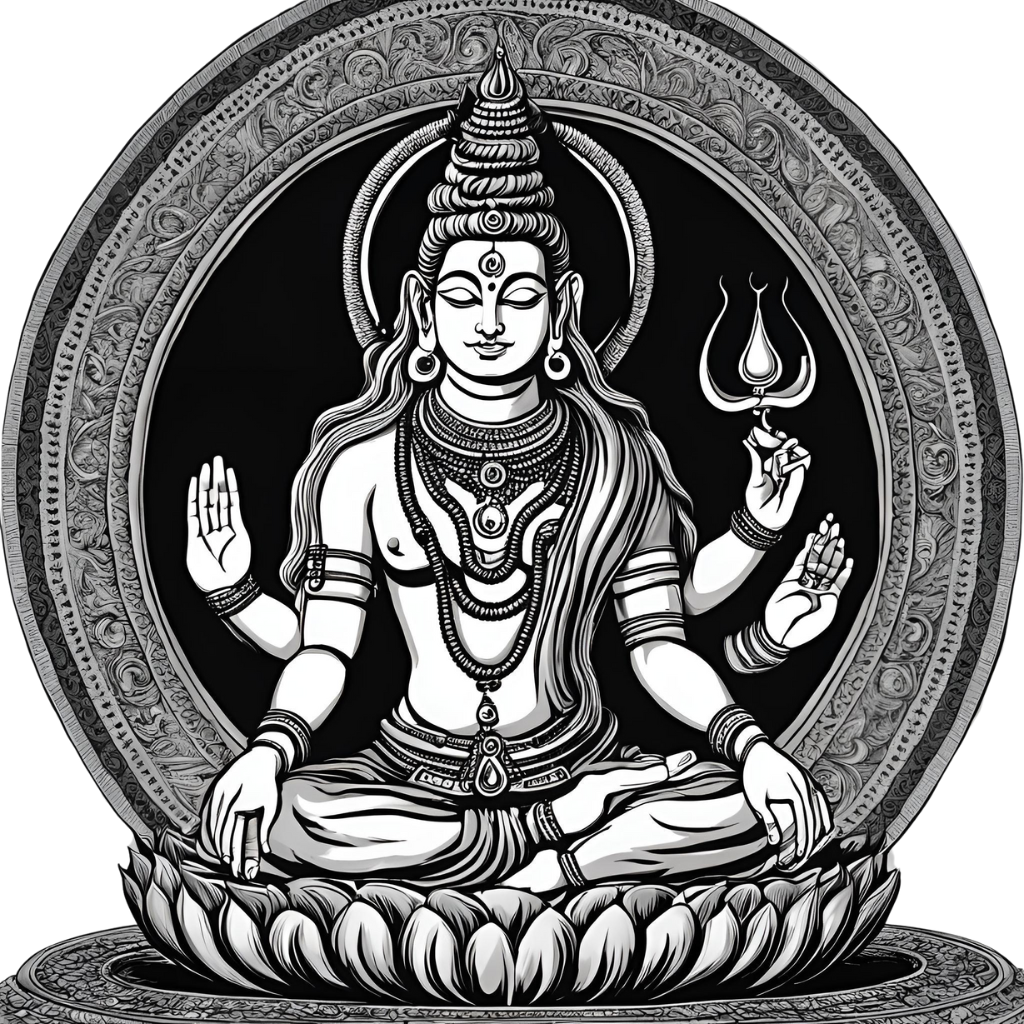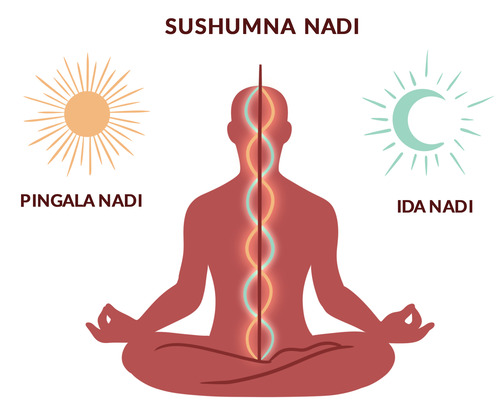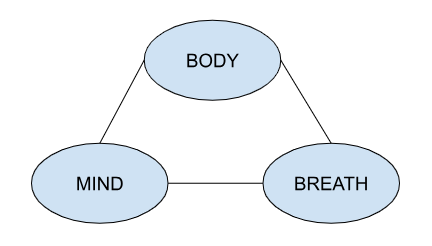What Is Hatha Yoga?
Hatha Yoga is not just about striking poses or increasing flexibility—it is a profound journey into the very essence of balance and harmony. Rooted in ancient Tantra, Hatha Yoga delves deep into the subtle energy systems of the body, uniting the flow of prana and stabilizing the nadis to bring clarity and control over the mind, body, and breath.
Often referred to as the “Father of Hatha Yoga,” Lord Shiva is believed to have introduced this transformative practice to the world.
In this post, we explore the origins, meaning, and deeper purpose of Hatha Yoga, helping you uncover its true essence and timeless power.
By Kushagra Saxena

HATHA YOGA:
Is it just about flexibility, or is there something deeper behind the poses?
Let’s explore the truth.
Do you practice yoga?
If your answer is “yes”, that’s exactly why you’re here, reading this post.
Now, let me ask you another question: Which yoga style do you practice?
Chances are, your answer might be Hatha Yoga.
But are we discussing Hatha Yoga purely as a practice, or is there something deeper to uncover?
In this post, we’ll dive into the roots of Hatha Yoga, exploring not only its meaning but also the profound science behind it.
The Origin of Hatha Yoga:
Hatha Yoga’s roots trace back to ancient Tantra and the profound philosophy of Tantric traditions. As an integral part of Tantra, Hatha Yoga goes beyond physical postures and fitness—it is a practice deeply intertwined with the subtle energy systems of the body.
To truly become a Yogi, one must understand the principles of Tantra. Without this understanding, the scope of Hatha Yoga remains limited to physical well-being, missing its deeper spiritual and energetic dimensions.
At its core, Hatha Yoga focuses on harmonizing the nadis (energy channels) and balancing the flow of prana (life force) within the body. This alignment lays the foundation for spiritual awakening and holistic transformation, as envisioned by ancient practitioners.
Hatha Yoga Meaning:
When you look for the meaning and definition of Hatha Yoga, the majority of people say Hatha means being stubborn or using force. This is true to some extent, as the general meaning of the term in Sanskrit is “being stubborn.” This is why people often focus on forcing the body to hold or perform specific poses.
Some also think, “I have to stand on one leg for years to be a Hatha Yogi.” This ruins the essence of the practice and creates a very narrow-minded approach.
But the actual meaning of the term is much deeper and connected with emotions as well.
So what is the actual meaning of HATHA?
The Deeper Meaning:
The term Hatha is a combination of two words: Ha + Tha, which are Hakar (‘HA’) and Thakar (‘THA’) Swaras.
- Swaras are the pathways through which prana flows in the nadis.
- These also correspond to the two main nadis connected with the nostrils in our body:
- HA (Pingala): Connected to the right nostril.
- THA (Ida): Connected to the left nostril.
- HA symbolizes the sun, heat, the sympathetic nervous system, Shiva, and the Yamuna River.
- THA symbolizes the moon, coolness, the parasympathetic nervous system, Shakti, and the Ganga River.
Definition of HATHA Yoga:
“Merzing the pranic flow from the Ida and the Pingal nadis to the Shushumna Nadi is Hatha Yoga.”

Practices of Hatha:
7 Limbs of Yoga:
- Shatkarma,
- Asana,
- Mudras & Bandhas,
- Pratyahara,
- Pranayama,
- Dhyan,
- Samadhi.
Maharishi Gherand gave these 7 limbs in his Text “Gherand Samhita” .
Our life is actually a circus between the two nadis Pingla & Ida.
Our mind is creating disturbances and causing chaos as the prana is moving between Ida and Pingla, this is why you feel anger, joy, sadness, happiness, pain, sorrows, pleasure, activity, dullness, and so on…
Hatha Yoga practices actually help to, first bring stability in between these two nadis (Ida & Pingla), and make our body, mind & breath stable and help to harness it to our control.
Body, Mind, and Breath Connection:
The interplay between the Body, Mind, and Breath is crucial in Hatha Yoga.
Here’s how they are interconnected:

The interplay between the body, mind, and breath is crucial in Hatha Yoga. Here’s how they are interconnected:
- If something happens to the body, it reflects on the breath and mind.
- If something happens to the breath, it affects the mind and body.
- If something happens to the mind, it impacts the body and breath.
Example:
Imagine feeling angry. The thought originates in your mind, which leads to muscle contractions in your body (preparing for action), and your breath becomes heavy. This demonstrates how interconnected they are.
Hatha Yoga practices address these chaotic patterns by bringing stability to the body, breath, and mind, allowing you to live a life of control, rather than being controlled by external circumstances or emotions.
======== Right?
Similarly body and breath affects the mind and each other. Just think of any your personal experiences.
This is how they all coordinate and create chaos.
This is why our great Yogis found a way to work on this and make our life easy and live the life with control not in the control of the mind, senses, and the circumstances.
So, HATHA YOGA is not something that can be practiced only in the jungle, away from the family and running away from the world or just doing asanas on your Yoga Mat.
It is all about taking full control of our mind by controlling our breath and body.
The first step to make this happen is the Cleansing (shatkarma) of the body.
Do not become too spiritual here, we are just talking about the purification of the body, not the mind or thoughts or soul, we will discuss that later.
If the body is unhealthy and unpurified you can not start your journey in Yoga and also can not achieve your goals both spiritual or material.
Just think, when you have a cold and a runny nose, how do you feel, will you be able to concentrate on anything?
Obviously not!
So, First, make your body healthy and clean both inside and outside.
Shatkarmas helps us to balance our Tri-Dosha: Vata, Pitta, and Kapha (we will discuss them later in another post.)
As now your body is purified and tri doshas are balanced, our Second step is to stabilize the body through Asana.
Asanas help us to not only stabilize the body but also prepare us to counter any adverse conditions like changes in weather, or climate. As it develops a resistance towards these.
Now as the body is ready the Third step of a normal person is to stabilize the breath through pranayama.
Pranayama helps us to give control over our breath, and through the breath our mind comes into our control easily and when the mind comes into our control, Your life turns into a zen-filled wonderland, and you feel like the main character, free from all sorrows, all pain, all hate, jealousy,etc.
You will be free and unaffected by the opinions of people around you.
Hatha Yoga and the Title YOGI:
Hatha Yoga is far beyond just physical practices. It’s a science of balancing the body, mind, and breath to live a life of control, free from chaos and emotional turbulence.
It’s not about escaping to the jungle or isolating yourself from the world. Instead, it’s about achieving harmony in everyday life through self-discipline and awareness.
Hatha Yoga is not something that can only be practiced by becoming a hermit or living in solitude.
And let’s not confuse this with the modern-day “Yogi” title, which is sometimes casually added in front of people’s names.
True yogis work on mastering their body, mind, and breath, leading a life of profound balance.
Conclusion:
Hatha Yoga is not merely a series of physical poses. It’s a holistic approach to life, connecting the body, mind, and breath for overall well-being.
The journey begins with understanding and cleansing the body, stabilizing it through asanas, and mastering the breath to take control of the mind. Only then can we experience true freedom and inner peace.
So, what are your thoughts on this deeper perspective of Hatha Yoga?
Till then,
“May The Forces Be With You.”
Hari Om Tat Sat !
YOGAINDETAIL.COM
